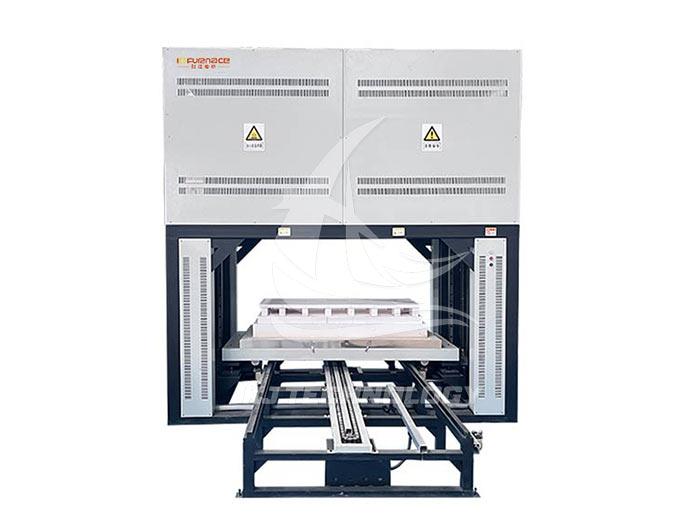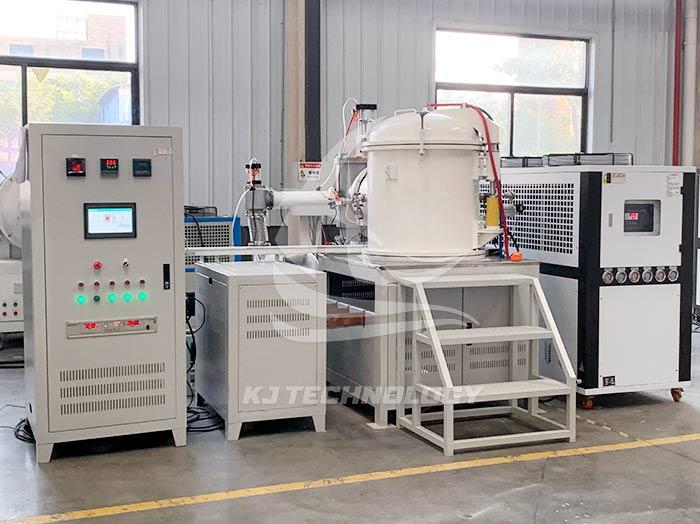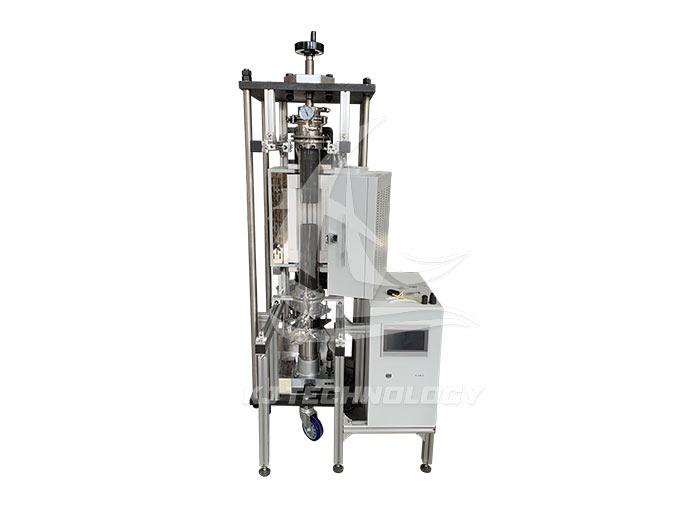Daily maintenance of aluminum brazing vacuum furnace
 07-03-2025 Author: KJ technology
07-03-2025 Author: KJ technology
The daily maintenance of aluminum brazing vacuum furnace is the key to ensuring stable operation of equipment, extending service life, and ensuring brazing quality. The following elaborates on the specific maintenance content and operation points from six aspects: daily cleaning, vacuum system maintenance, heating system inspection, cooling system maintenance, safety device testing, and recording and tracing:
1. Daily cleaning: Keep the furnace body and fixtures clean
Furnace cleaning
After daily operation: Use specialized tools (such as soft brushes, vacuum cleaners) to remove aluminum shavings, solder residues, and oxide scales from the furnace to avoid residue contamination of subsequent workpieces or blockage of heating elements.
Weekly deep cleaning: Wipe the furnace wall and insulation screen with anhydrous ethanol or acetone to remove oil stains and trace oxides, and prevent evaporation at high temperatures from affecting the vacuum degree.
Attention: Wear protective gloves when cleaning to avoid scratching the surface of the furnace (such as stainless steel or graphite lining); If the furnace has a coating, non corrosive cleaning agents should be used.
Maintenance of fixtures and jigs
Check for deformation and wear: Check the fixture daily for deformation, cracks, or wear, paying special attention to the positioning surface in contact with the workpiece to ensure clamping accuracy.
Cleaning and rust prevention: Use compressed air to blow off the dust on the surface of the fixture, apply rust proof oil to the carbon steel fixture, and wipe the aluminum alloy fixture with alcohol before storing it in a dry place.
2.Vacuum system maintenance: Ensure sealing and pumping efficiency
Vacuum pump maintenance
Mechanical pump/Roots pump:
Daily inspection: Observe whether the oil level is at 1/2~2/3 of the window. If the oil color turns black or cloudy, it needs to be replaced (usually every 500 hours).
Weekly cleaning: Use an oil filter to filter pump oil, remove metal particles and impurities, and extend pump life.
Diffusion pump:
Monthly inspection: Confirm if the pump oil heating temperature is normal (usually 200-250 ℃), and replenish if the oil level drops by more than 10%.
Half yearly cleaning: Disassemble the pump body, clean the oil oxidation products with trichloroethylene, and conduct a leak test after reassembly.
Vacuum valves and pipelines
Daily inspection: Confirm that all valves (such as main valves and bypass valves) are open and closed flexibly, without any jamming or leakage sound.
Weekly leak detection: Use a helium mass spectrometer leak detector to detect the valve sealing ring. If the leakage rate is greater than 1 × 10 ⁻⁹ Pa · m ³/s, the sealing element needs to be replaced.
Pipeline cleaning: Blow the inner wall of the pipeline with compressed air every quarter to remove dust and metal shavings, and prevent blockage or contamination of the furnace chamber.
3. Heating system inspection: ensure temperature uniformity and stability
Heating element maintenance
Daily visual inspection: Observe whether the resistance wire and graphite heater are broken, oxidized, or locally overheated (such as uneven redness).
Monthly resistance test: Use a multimeter to measure the resistance value of the heating element, and replace it if the deviation from the initial value is greater than 10%.
Graphite heater maintenance: Polish the surface oxide layer with sandpaper every six months and apply a boron nitride coating to reduce heat radiation loss.
Thermocouple calibration
Monthly comparison test: Synchronize the thermocouple inside the furnace with a standard thermometer (such as a platinum resistance thermometer) for measurement. If the error is greater than ± 3 ℃, recalibration or replacement is required.
Protective sleeve inspection: Confirm daily that the sleeve is not damaged to prevent contamination or oxidation of the thermocouple, which may affect temperature measurement accuracy.
4. Cooling system maintenance: prevent equipment overheating and workpiece oxidation
Water cooling system maintenance
Daily inspection: Confirm that the inlet pressure (usually 0.2~0.4MPa), flow rate (≥ 5L/min) are normal, and outlet temperature is ≤ 45 ℃.
Weekly cleaning: Disassemble the water-cooled joint and use a soft bristled brush to remove scale and impurities to prevent blockage and local overheating.
Water quality management: Use deionized water or softened water with a hardness of ≤ 50mg/L to avoid scaling and corrosion of pipelines.
Nitrogen cooling system
Daily inspection: Confirm that the nitrogen pressure (0.4~0.6MPa) is stable and that there is no water accumulation in the drainage valve of the gas storage tank.
Monthly testing: Simulate the forced cooling process and check if the nitrogen flow rate meets the process requirements (such as ≥ 50m ³/h) to ensure cooling efficiency.
5. Safety device testing: ensuring the safety of equipment and personnel
Overtemperature alarm system
Weekly testing: Manually trigger the over temperature alarm (if the set temperature is 10 ℃ higher than the process upper limit), confirm that the sound and light alarm is normal and the heating power supply is automatically cut off.
Record test results: Record the alarm temperature and response time in the device log to ensure system reliability.
Overvoltage protection device
Monthly testing: Close all valves, fill the furnace with nitrogen to the design pressure limit (such as 0.1MPa), and observe whether the pressure relief valve automatically opens to release pressure.
Clean the release valve: After testing, wipe the valve port with alcohol to remove oil and impurities and prevent sticking.
emergency stop function
Before daily operation: Press the emergency stop button to confirm that all heating, exhaust, and cooling systems have stopped immediately, and the furnace door can be manually opened.
Reset check: After shutdown, the system needs to be manually reset to avoid misoperation that may cause the device to fail to start.
6.Record and trace: Establish equipment health records
Filling in maintenance log
Daily recording of equipment operating parameters (such as vacuum degree, temperature curve, cooling time), maintenance content (such as oil change, dust cleaning), and abnormal situations (such as air leakage, alarm).
Maintenance personnel need to sign and confirm to ensure traceability of responsibilities.
Spare parts inventory management
Establish a list of key spare parts (such as sealing rings, thermocouples, heating elements), conduct regular inventory checks, and purchase in a timely manner when the inventory falls below the safety stock.
Spare parts should be stored by model to avoid confusion and installation errors.
Annual overhaul plan
Based on the service life and operational status of the equipment, develop an annual overhaul plan (such as replacing insulation screens and repairing vacuum pump motors) to ensure long-term stable operation of the equipment.








